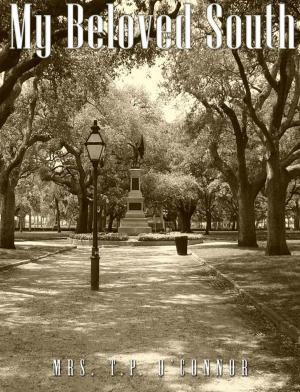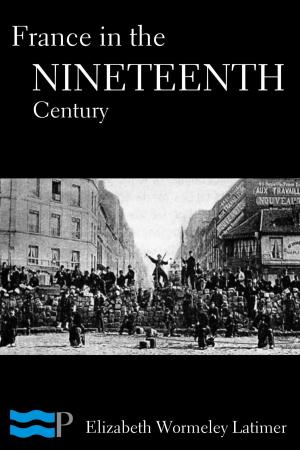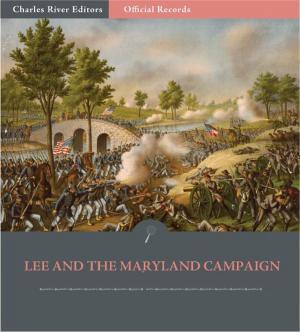The Greatest Civil War Battles: The Battle of Fort Sumter
Nonfiction, History, Americas, United States, Civil War Period (1850-1877), 19th Century| Author: | Charles River Editors | ISBN: | 9781475322507 |
| Publisher: | Charles River Editors | Publication: | March 2, 2013 |
| Imprint: | Language: | English |
| Author: | Charles River Editors |
| ISBN: | 9781475322507 |
| Publisher: | Charles River Editors |
| Publication: | March 2, 2013 |
| Imprint: | |
| Language: | English |
Explains the events that led up to the Battle of Fort Sumter, including the preparations in Charleston Harbor on both sides.Includes accounts of the fighting and reports by Beauregard, Anderson, Doubleday, and other participants.Includes pictures of important people and places.Includes a Table of Contents."I am of the opinion that, if Sumter was properly garrisoned and armed, it would be a perfect Gibraltar to anything but constant shelling, night and day, from the four points of the compass. As it is, the weakness of the garrison constitutes our greatest advantage, and we must, for the present, turn our attention to preventing it from being re-enforced." - P.G.T. BeauregardAt 4:30 a.m. on the morning of April 12, 1861, Confederate Brigadier-General P.G.T. Beauregard ordered the first shots to be fired at the federal garrison defending Fort Sumter in the Charleston Harbor, effectively igniting the Civil War. For nearly 36 hours, Beauregard's Confederates unleashed a general bombardment from 43 guns and mortars positioned at various points across the Harbor, including at Fort Moultrie on Sullivan Island, Fort Johnson off James Island, Cummings Point on Morrison Island, and a specially designed floating battery.Almost immediately, the inherent weakness of Fort Sumter became apparent to its defenders. The fort had been designed to withstand a naval assault, and naval warships of that time did not mount guns capable of elevating high enough to shoot over the walls of forts, but the Confederates' land-based cannons could lob artillery shells and mortar directly inside Fort Sumter. Though the defenders managed to protect themselves inside the Fort, their return fire was completely ineffective, and by the morning of April 13 the Fort was on fire, threatening the garrison. Unable to effectively reply or defend themselves, Major Robert Anderson raised the white flag early in the afternoon of April 13, bringing the first battle of the Civil War to a close. No casualties were suffered on either side during the dueling bombardments across Charleston Harbor, but ironically two U.S. Army soldiers were killed by an accidental explosion during the surrender ceremonies.Fort Sumter is popularly remembered today as the first fighting of the Civil War, and a relatively painless battle at that, but much of the history before April 12 that led to the shelling of the fort is often overlooked. The federal garrison had been stationed there months before the fight, carefully watching the secession of South Carolina, the buildup of Confederate forces in the region, and the actions of the Buchanan Administration and incoming Lincoln administration in the weeks leading up to the bombardment. The Greatest Civil War Battles: The Battle of Fort Sumter comprehensively covers the events that led up to the battle, the fighting itself, and the aftermath of the battle. Accounts of the battle by important participants like P.G.T. Beauregard, Robert Anderson and Abner Doubleday are also included. Along with pictures of important people, places, and events, you will learn about the Battle of Fort Sumter like you never have before, in no time at all.
Explains the events that led up to the Battle of Fort Sumter, including the preparations in Charleston Harbor on both sides.Includes accounts of the fighting and reports by Beauregard, Anderson, Doubleday, and other participants.Includes pictures of important people and places.Includes a Table of Contents."I am of the opinion that, if Sumter was properly garrisoned and armed, it would be a perfect Gibraltar to anything but constant shelling, night and day, from the four points of the compass. As it is, the weakness of the garrison constitutes our greatest advantage, and we must, for the present, turn our attention to preventing it from being re-enforced." - P.G.T. BeauregardAt 4:30 a.m. on the morning of April 12, 1861, Confederate Brigadier-General P.G.T. Beauregard ordered the first shots to be fired at the federal garrison defending Fort Sumter in the Charleston Harbor, effectively igniting the Civil War. For nearly 36 hours, Beauregard's Confederates unleashed a general bombardment from 43 guns and mortars positioned at various points across the Harbor, including at Fort Moultrie on Sullivan Island, Fort Johnson off James Island, Cummings Point on Morrison Island, and a specially designed floating battery.Almost immediately, the inherent weakness of Fort Sumter became apparent to its defenders. The fort had been designed to withstand a naval assault, and naval warships of that time did not mount guns capable of elevating high enough to shoot over the walls of forts, but the Confederates' land-based cannons could lob artillery shells and mortar directly inside Fort Sumter. Though the defenders managed to protect themselves inside the Fort, their return fire was completely ineffective, and by the morning of April 13 the Fort was on fire, threatening the garrison. Unable to effectively reply or defend themselves, Major Robert Anderson raised the white flag early in the afternoon of April 13, bringing the first battle of the Civil War to a close. No casualties were suffered on either side during the dueling bombardments across Charleston Harbor, but ironically two U.S. Army soldiers were killed by an accidental explosion during the surrender ceremonies.Fort Sumter is popularly remembered today as the first fighting of the Civil War, and a relatively painless battle at that, but much of the history before April 12 that led to the shelling of the fort is often overlooked. The federal garrison had been stationed there months before the fight, carefully watching the secession of South Carolina, the buildup of Confederate forces in the region, and the actions of the Buchanan Administration and incoming Lincoln administration in the weeks leading up to the bombardment. The Greatest Civil War Battles: The Battle of Fort Sumter comprehensively covers the events that led up to the battle, the fighting itself, and the aftermath of the battle. Accounts of the battle by important participants like P.G.T. Beauregard, Robert Anderson and Abner Doubleday are also included. Along with pictures of important people, places, and events, you will learn about the Battle of Fort Sumter like you never have before, in no time at all.















